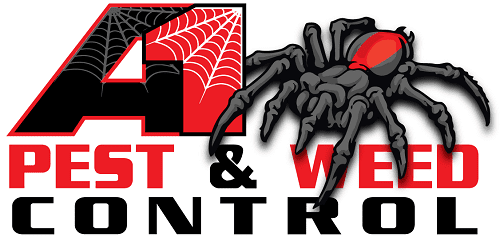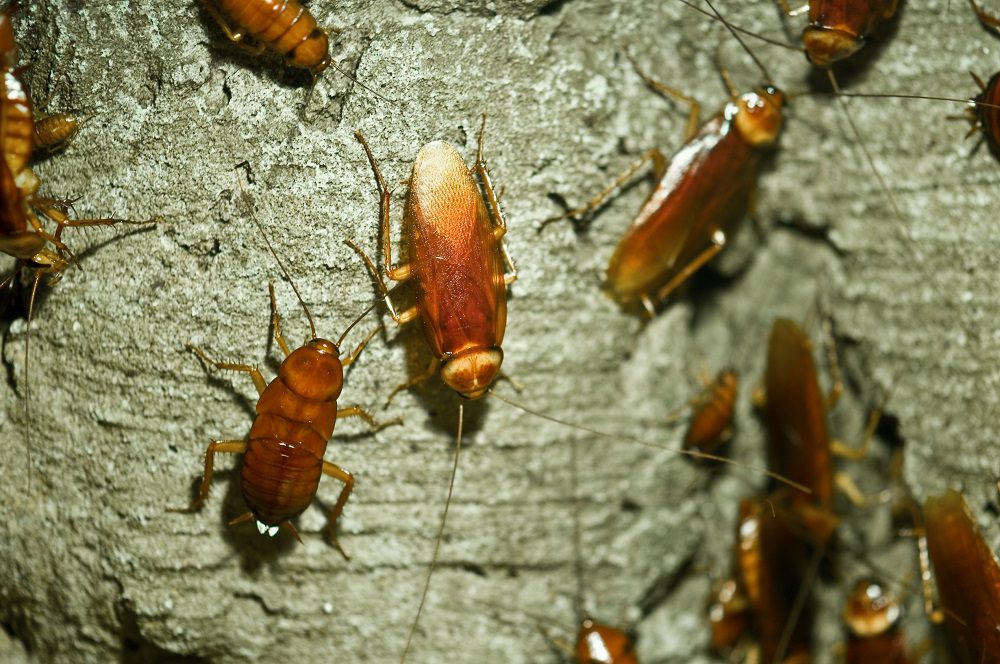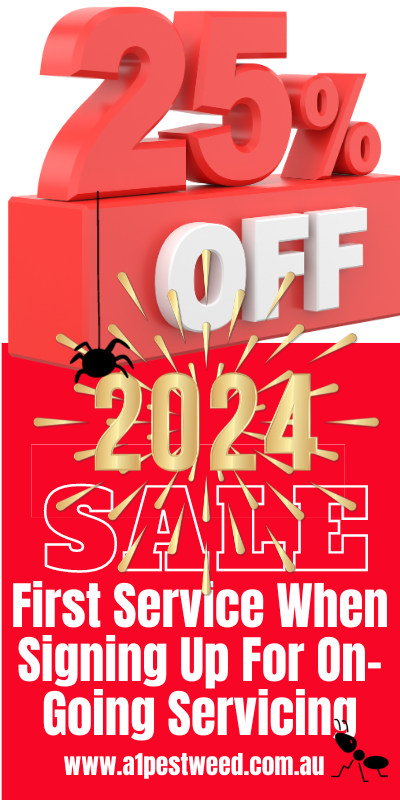Masterful Strategies: Showcasing Integrated Pest Management in Action
Integrated Pest Management (IPM) is an effective and environmentally conscious approach to pest management. It involves using a combination of strategies, including biological control, cultural practices, and chemical applications when necessary, to manage pests in a sustainable manner.
We will dive deeper into understanding IPM and its core principles. We will also guide you through the steps to develop an effective IPM plan that works for your specific needs.
Additionally, we will discuss successful IPM plans and common mistakes to avoid when creating one.
Finally, we will talk about the long-term benefits of implementing an IPM plan and how you can ensure success with it. Contact A1 Pest & Weed Control for more information on commercial services in Melbourne.
Understanding Integrated Pest Management (IPM)
Integrated Pest Management (IPM) combines various strategies for effective pest control. It emphasizes long-term prevention and reduction of pests while minimizing the use of pesticides to protect the environment.
IPM takes into account the specific needs of each crop or situation, promoting sustainable and economically viable pest control practices.
By integrating techniques such as mite control and the use of biopesticides, IPM provides an efficient and environmentally responsible approach to pest management.
The Core Principles of IPM
Integrated Pest Management (IPM) emphasizes the use of cultural practices and non-chemical controls to manage pests effectively. By monitoring pest populations, IPM determines the need for intervention, setting action thresholds to determine when pest management actions are necessary.
It encourages the use of environmentally friendly pest control methods and integrates various strategies for long-term control.
This approach ensures a holistic and sustainable means of control of pests, utilizing techniques such as biopesticides for an environmentally responsible approach to pest management.
5 Integrated Pest Management Plan Examples In Australia
- Vineyard Vigilance: Australian wineries often implement integrated pest management by using pheromone traps to monitor and control grapevine moths, introducing predatory insects like lacewings, and employing cultural practices to reduce the need for chemical interventions.
- Citrus Sensibility: Citrus orchards in Australia may adopt a holistic approach to pest management by releasing parasitic wasps to control citrus leafminer populations, practising regular tree pruning, and using selective insecticides only when necessary.
- Grain Guardian: Integrated pest management is crucial in grain storage facilities. Australian grain handlers utilize a combination of aeration, temperature control, and grain hygiene to prevent the infestation of pests such as weevils and moths.
- Urban Pest Harmony: In urban settings, Australian pest management often involves implementing strategies like sealing entry points, using bait stations for rodents, practising waste management, and fostering a balanced ecosystem to control pests without heavy reliance on chemicals.
- Pastoral Pest Strategy: Integrated pest management is critical for maintaining healthy livestock. In Australia, cattle ranches might employ rotational grazing, biological controls like dung beetles to break pest cycles, and strategic chemical treatments to manage parasites like ticks and flies.
Steps to Develop an Effective IPM Plan
To develop an effective IPM plan, start by identifying the pest problems specific to your situation. Set action thresholds based on pest population levels to determine when intervention is necessary. Regularly monitor and identify pests using appropriate techniques to stay proactive.
Implement preventive measures, such as cultural practices and biopesticides, to reduce pest threats. Continuously evaluate the effectiveness of your IPM plan and make necessary adjustments to ensure mean control of pests. With these steps, you can develop a comprehensive and successful IPM plan.
Setting Action Thresholds in IPM
Action thresholds in integrated pest management (IPM) determine the need for pest management actions. These thresholds should be established based on research and expert recommendations. Regular monitoring of pest populations is crucial to determine if action is necessary.
It is important to consider the economic and environmental costs of pest damage before taking any action. Additionally, action thresholds should be adjusted based on environmental conditions and crop growth stages.
By setting appropriate action thresholds, IPM practitioners can effectively manage pests while minimizing unnecessary control measures.
Pest Monitoring and Identification Techniques
To effectively monitor and identify pests, visual inspection is a crucial technique that helps in identifying signs of pest presence. Trapping methods can also be implemented to monitor pest populations. To attract and capture specific pests, pheromone traps can be utilized.
Furthermore, remote sensing technology can be applied to detect pest infestations. For accurate pest identification, seeking professional assistance is highly recommended. These techniques play a significant role in integrated pest management, ensuring effective control and prevention.
Strategies to Prevent Pest Threats
To prevent pest threats, implementing good agricultural practices can create unfavourable conditions for pests. Crop rotation disrupts pest life cycles while using resistant plant varieties reduces susceptibility. Biological control methods, such as the use of mites and biopesticides, help manage pest populations.
Additionally, maintaining proper sanitation and hygiene is crucial for preventing pest infestations. By employing these strategies, integrated pest management plans can effectively prevent and control pest threats.
How are Pesticides Utilized in IPM?
Pesticides play a role in IPM as a last resort. They are selective, targeting specific pests while minimizing harm to beneficial organisms. Pesticide application is based on action thresholds and pest population dynamics, and their integration with other control methods enhances effectiveness. Regular monitoring determines the need for pesticide use.
Can IPM be Practiced in Personal Gardens?
IPM can indeed be applied in personal gardens for effective pest management. By implementing preventive measures such as proper plant selection and spacing, regularly monitoring plants for signs of infestation, and utilizing cultural practices like mulching and companion planting, you can control pests without relying heavily on pesticides. Consider organic and biological controls before resorting to chemical interventions.
How to Determine if Your Purchased Food is Grown Using IPM?
To determine if your purchased food is grown using IPM, look for labels or certifications that indicate IPM practices. Inquire with growers or suppliers about their pest management methods. Check the company’s privacy policy for information on IPM practices.
Research local regulations or programs promoting IPM in food production. Support local farmers’ markets and organic food producers who prioritize IPM.
5 Examples of Successful IPM Plans
- Australia’s IPM plan for the cotton industry achieved an impressive 85% reduction in pesticide use, benefiting both the environment and human health.
- In the United States, schools implementing IPM programs witnessed improved indoor air quality and better student health outcomes.
- By targeting specific pests, vineyards successfully reduced pesticide spraying through effective IPM implementation.
- Rice cultivation experienced reduced resistance to pesticides and increased yields with the adoption of IPM practices.
- Apple orchards have effectively decreased reliance on synthetic pesticides through the strategic use of IPM strategies.
Get Professional Assistance for Your IPM Plan With A1 Pest & Weed Control
Partnering with A1 Pest & Weed Control for your integrated pest management (IPM) plan ensures access to expert assistance. Their team specializes in developing tailored IPM plans, incorporating advanced pest control technologies and tools. By collaborating with A1 Pest & Weed Control, businesses can ensure compliance with regulations and industry standards.
Their experience in implementing effective IPM strategies provides ongoing support and guidance for your IPM plan. Don’t let pests take control. Enquire with A1 Pest & Weed Control to benefit from their expertise and enhance your IPM efforts.
Common mistakes to avoid when creating an IPM plan
Over-reliance on pesticides can cause environmental damage and pesticide resistance, while neglecting regular pest population monitoring may result in missed intervention opportunities. Failing to set action thresholds can lead to unnecessary pesticide spraying, and ignoring the importance of integrated pest management practices can hinder long-term control.
Additionally, neglecting to consider specific environmental conditions can impact the plan’s effectiveness. It is crucial to avoid these common mistakes when creating an IPM plan.
What are the long-term benefits of an IPM plan?
Reducing pesticide use minimizes harm to the environment and human health, making IPM a sustainable pest control solution. By focusing on prevention, implementing an IPM plan ensures long-term pest management. It also saves costs associated with pesticides and reduces reliance on single control methods.
How to ensure success with an IPM plan?
To ensure success with an IPM plan, regular monitoring of pest populations is crucial for decision-making. Setting action thresholds helps determine when intervention is necessary. Integrating cultural and biological controls improves effectiveness.
Training and educating staff on IPM practices ensure proper implementation. Adapting the plan based on feedback and evaluation enhances its success.
Contact A1 Pest & Weed Control For Commercial Services In Melbourne
For comprehensive pest management solutions tailored to commercial properties in Melbourne, turn to A1 Pest & Weed Control. Our team is well-versed in integrated pest management techniques, employing a proactive approach to address pest issues before they escalate.
With a focus on customer satisfaction, we deliver reliable and efficient pest control services. Contact us to discuss your business needs and receive a customized pest management plan. We are here to ensure that pests are kept under control, allowing your business to thrive.
Frequently Asked Questions
What are some common pests that can be managed using IPM?
Common pests that can be effectively managed using IPM include rodents, insects, and weeds. Examples of pests that can be controlled using IPM are cockroaches, ants, termites, and bedbugs. IPM focuses on prevention and non-toxic methods before resorting to chemical treatments. Tailoring the IPM plan to the specific pest and environment is crucial for success.
Are there any potential drawbacks or limitations to using IPM?
Potential drawbacks and limitations of using IPM include the time-consuming nature of the approach, which requires regular monitoring. Immediate results may not be achieved compared to conventional pest control methods. Implementing IPM in large-scale agricultural operations can also pose challenges. Success depends on factors like climate, pests, and crop types.
What are some examples of non-chemical pest control techniques that can be used in an IPM plan?
Non-chemical pest control techniques in an IPM plan include physical methods like trapping, exclusion, and habitat modification. Biological control utilizes natural predators, parasites, or pathogens. Cultural control involves practices like crop rotation, sanitation, and pruning. Education and communication with stakeholders are also important components of an IPM plan.



